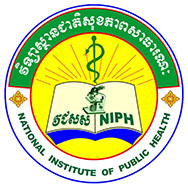Potential Use of Community-Based Rapid Diagnostic Tests for Febrile Illnesses - Formative Research in Peru and Cambodia
Abstract
In 2012, the U.S. Defense Threat Reduction Agency Joint Science and Technology Office initiated a program to develop novel point-of-need diagnostic devices for surveillance of emerging infectious diseases including dengue, malaria, plague, and melioidosis. Prior to distribution of devices to observe their correct use among community members in Iquitos, Peru, and Phnom Penh, Cambodia, research was conducted to: 1) assess acceptability of use, including the motivation to use a rapid diagnostic test (RDT) before or instead of seeking care at a health facility, 2) explore comprehension of RDT use instructions, and 3) examine possible strategies for large scale RDT distribution and use at each site. In February 2014, 9 focus group discussions (FGD) with community members and 5 FGD with health professionals were conducted in Iquitos, and 9 FGD with community members and 9 in-depth interviews with health professionals in Phnom Penh. In both places, participants agreed to use the device themselves (involving finger prick) or could identify someone who could do so in their home or neighborhood. The main incentive to RDT use in both sites was the ability for device results to be used for care facilitation (post confirmatory tests), specifically reduced wait times to be seen or obtain a diagnosis. Comprehension of RDT use instructions was assessed in Iquitos by asking some participants to apply the device to research team members; after watching a short video, most steps were done correctly. In Phnom Penh, participants were asked to describe each step after reading the instructions; they struggled with comprehension. Health professionals’ main concerns in both sites were their community’s ability to accurately use the test, handle complicated instructions, and safety (i.e., disposal of lancets). Health system structure and ability to use home diagnostic devices varied in the two disease endemic sites, with substantial challenges in each, suggesting the need for different strategies for RDT large scale community use, and illustrating the value of formative research before deployment of novel technologies.
